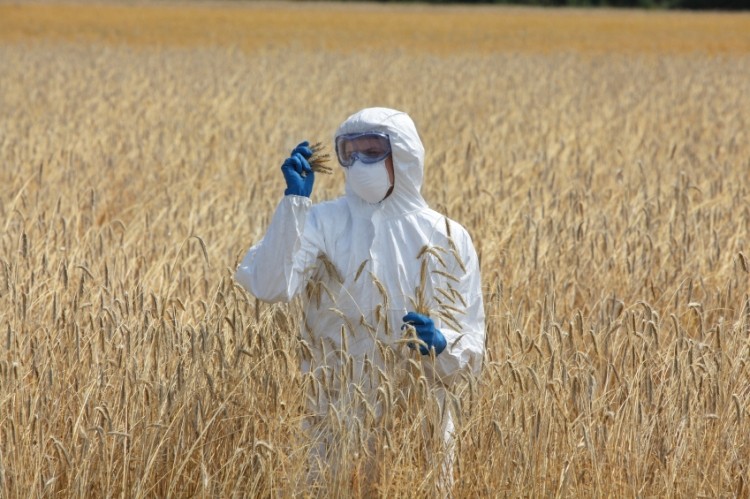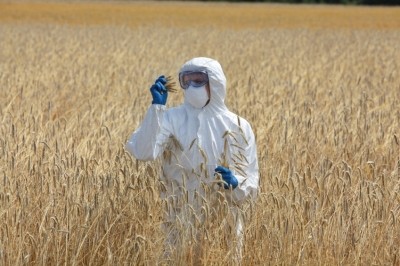Applause for EFSA inclusion of metabolite risk in mycotoxin review

The European Food Safety Authority (EFSA) panel for Contaminants in the Food Chain (CONTAM) recommended that TDI in an opinion in 2011, based on oestrogenicity in pigs.
In its findings this week, the CONTAM panel said no new studies were identified to change that intake limit on zearalenone (ZEN) in terms of its presence in food and feed.
Commenting on the opinion, Nick Adams, global director, mycotoxin management, Alltech, noted, however, this time out, EFSA has also determined the metabolites and conjugated forms of zearalenone should be included in this TDI total.
“As a result, producers of food, feed and animals may still utilize the guideline limits they previously followed, but they now must be aware this value accounts for total zearalenones. As a result, lab analysis for determination of ZEN levels in food or feed should be conducted utilizing methods that account for ZEN and its metabolites,” said Adams.
He said it was a positive the EU risk assessor was considering the impact the metabolites of these compounds can have on animals in its risk analysis. “It is important EFSA now includes these other mycotoxin forms in their assessments of overall toxicity and regulatory levels,” he told us.
Upcoming risk assessments eagerly anticipated
“It will be very interesting to learn what EFSA discovers through its investigation of other mycotoxin groups post their investigation of ZEN, particularly regards the combined toxicity of fumonisin B1 and B2, T-2 toxin and its metabolites, and nivalenol and its metabolites,” he continued.
Of further note in the CONTAM opinion, said Adams, was the conclusion that not all metabolites or conjugates have equal oestrogenicity to the parent compound zearalenone:
“Some forms have greater toxicity, while others have lesser toxicity to the animal. As a result, a relative toxicity of each compound must be determined by comparing each metabolite form to zearalenone.
Interestingly, a similar method has been in use over the past several years by Alltech in our calculations of total risk due to mixtures of mycotoxins,” said Adams.
Mycotoxin masking
Reacting to the EFSA risk assessment on ZEN, Dr Dian Schatzmayr, development team leader, mycotoxins at Biomin praised the precautionary approach taken by the CONTAM panel.
“In the 2015 Biomin Mycotoxin survey, ZEN was detected in 65% of European feed corn samples. This was a year of high prevalence and also higher concentrations than usual and we would expect there to have been a similar trend in human food corn.
“ZEN binds to estrogen receptors impacting on animal reproductive performance and has been reported as an occasional issue in humans.
“We believe that the EFSA opinion will help to highlight the issue of ZEN and other mycotoxins that can be masked by being bound to glucose or other plant compounds. The masked forms of ZEN are rightly recognized by the EFSA panel as becoming active again in humans and animals and this confirms the approach taken by Biomin in the agricultural sector,” she said.
Commenting on the findings, Olga Averkieva, business development manager, mycotoxins, at Nutriad International, said the CONTAM panel’s statement that ‘not only the zearalenone itself, but also modified forms, may contribute to the toxicity of the parent toxin’ is valid, but that it could be more specific.
“It is obvious that different zearalenone forms have different features and some of them are much less harmful, for instance beta-zearalenol compared to alfa-zearalenol
Therefore, for optimal estimation of safe zearalenone levels, it would be crucial to collect data about the real effect of each of metabolites studied,” said Averkieva.
Synergistic effects
ZEN, as well as its metabolites, almost never occurs alone but with other mycotoxins such as DON or in some cases T/HT-2 toxins, she said.
“Lower levels of zearalenone, acting in synergy with other mycotoxins, could potentially be more harmful than thought.”
“As a practical mycotoxin specialist with the needs of animal producers in mind, I would confirm that the limited data on the occurrence but also on the correlations of modified forms of ZEN in food and feed is a major obstacle.
“Feed and animal producers are not able to analyse all metabolites. Methods or laboratories, which can perform such analyses, are either not available or affordable.
In most cases, animal and feed producers can analyse zearalenone only.”
Therefore, she said, it would be practical for researchers first to find out the potential correlation between ZEN and its most harmful constituents and to take that into account when developing a TDI.
Potentially, said Averkieva, when enough data have been obtained, the maximum recommended limits for mycotoxins from the ZEN group might be reduced.
The EFSA findings on ZEN can be read here.














